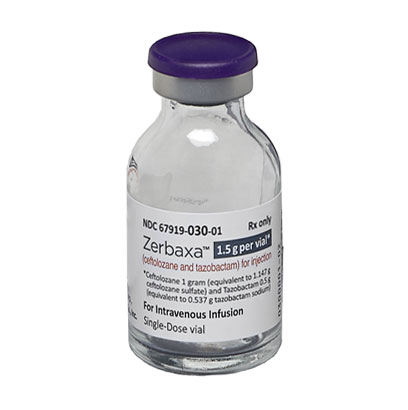Potential of Zerbaxa: Understanding Its Role in Infection Management
Introduction: Zerbaxa, a powerful antibiotic, plays a vital role in combating infections. This comprehensive guide dives into the mechanisms, indications, benefits, and considerations surrounding Zerbaxa.
The Science Behind Zerbaxa: How It Works to Tackle Infections
Dual Action Formula: Discover how Zerbaxa combines ceftolozane and tazobactam to target a wide range of bacterial infections. Uncover the synergy that enhances its efficacy against challenging pathogens.

Indications for Zerbaxa: Conditions It Addresses and Targets
Hospital-Acquired Pneumonia (HAP) and Ventilator-Associated Pneumonia (VAP): Learn how Zerbaxa is indicated for treating HAP and VAP, addressing infections that can develop during hospital stays, particularly in patients on mechanical ventilation.
Complicated Urinary Tract Infections (cUTIs) Including Pyelonephritis: Explore how Zerbaxa is used to combat cUTIs, including infections affecting the kidneys. Understand its role in managing complex urinary tract infections.
Administering Zerbaxa: Dosage and Usage Guidelines
Tailored Dosages: Learn how Zerbaxa dosages are determined based on the severity of the infection, patient’s age, and overall health. Precise dosing is essential for optimal treatment outcomes.
Administration and Timing: Discover the proper administration methods, whether through intravenous infusion or injection. Timing and duration of Zerbaxa treatment are crucial to ensure complete eradication of infections.
Possible Side Effects and Precautions
Common Side Effects: Explore potential side effects such as nausea, diarrhea, and headache. While these effects are generally mild, understanding them helps patients and healthcare providers manage treatment.
Antibiotic Resistance Considerations: Understand the importance of responsible antibiotic use to prevent the development of antibiotic-resistant strains of bacteria. Following healthcare provider instructions is crucial.
Monitoring and Follow-Up Care
Regular Monitoring: Learn about the importance of follow-up appointments and monitoring while on Zerbaxa treatment. Healthcare providers track your progress and address any emerging concerns.
Response Assessment: Discover how healthcare professionals assess your body’s response to Zerbaxa treatment through laboratory tests and clinical evaluations.
Zerbaxa in Special Populations
Pediatric Use: Explore how Zerbaxa is used in pediatric patients and the considerations taken to ensure safe and effective treatment in children.
Elderly Patients: Understand how Zerbaxa dosing and usage may be adapted for elderly patients, accounting for their unique medical needs and potential vulnerabilities.
Combining Zerbaxa with Other Medications
Interactions and Compatibility: Learn about potential drug interactions with Zerbaxa and how healthcare providers ensure the safe combination of medications for effective treatment.
Frequently Asked Questions (FAQs) About Zerbaxa
What is Zerbaxa used for?
Zerbaxa is an antibiotic used to treat a variety of bacterial infections, including hospital-acquired pneumonia, ventilator-associated pneumonia, and complicated urinary tract infections.
How does Zerbaxa work?
Zerbaxa combines two active ingredients, ceftolozane and tazobactam, to target and inhibit the growth of bacteria. This dual action makes it effective against a range of infections.
Is Zerbaxa effective against antibiotic-resistant bacteria?
Zerbaxa’s dual mechanism of action enhances its effectiveness against certain antibiotic-resistant strains of bacteria. However, responsible antibiotic use is vital to prevent further resistance.
How is Zerbaxa administered?
Zerbaxa is typically administered through intravenous infusion or injection by a healthcare professional. The dosage and administration schedule depend on the specific infection being treated.
What are the common side effects of Zerbaxa?
Common side effects may include nausea, diarrhea, headache, and changes in laboratory test results. Your healthcare provider will monitor and manage these effects.
Can Zerbaxa be used in pediatric patients?
Yes, Zerbaxa can be used in pediatric patients under the guidance of a healthcare professional. The dosage and administration are adjusted based on the child’s age and weight.
Are there any precautions to take while on Zerbaxa?
Inform your healthcare provider about any allergies, medical conditions, or other medications you’re taking. Follow their instructions closely to ensure safe and effective treatment.
Can Zerbaxa be used during pregnancy?
Zerbaxa should only be used during pregnancy if the potential benefits outweigh the risks. Consult your healthcare provider to assess the situation and make an informed decision.
How long does Zerbaxa treatment usually last?
The duration of Zerbaxa treatment varies depending on the type and severity of the infection. Your healthcare provider will determine the appropriate treatment length.
Can I stop Zerbaxa treatment once I feel better?
It’s important to complete the full course of Zerbaxa treatment, even if your symptoms improve. Stopping treatment prematurely could lead to the incomplete eradication of bacteria.
Conclusion:
Empowering Infection Control: Zerbaxa’s innovative formulation and broad spectrum of action make it a crucial tool in the fight against challenging bacterial infections. Understanding its role empowers patients and healthcare providers alike.




